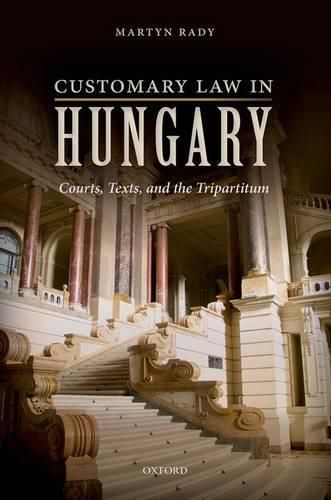Readings Newsletter
Become a Readings Member to make your shopping experience even easier.
Sign in or sign up for free!
You’re not far away from qualifying for FREE standard shipping within Australia
You’ve qualified for FREE standard shipping within Australia
The cart is loading…






This is the first comprehensive treatment in any language on the history of customary law in Hungary. It covers the period from the thirteenth to the twentieth centuries. Its starting-point is the customary law code published by Stephen Werboczy in 1517, which is known as the Tripartitum. Customary Law in Hungary discusses the composition, structure, and procedures of the courts as well as the substantive law of the kingdom, with special reference to noble land holding, and includes aspects of Hungarian public law, most notably the royal succession, the right of resistance, the making of statute law, and the use in the modern period of ministerial decrees and judicial decisions. The nature of customary law is discussed and, likewise, its deployment in the modern period as a rhetorical device. This volume has a considerable comparative content which will be of interest to legal historians as well as to specialists in Central European history.
$9.00 standard shipping within Australia
FREE standard shipping within Australia for orders over $100.00
Express & International shipping calculated at checkout
This is the first comprehensive treatment in any language on the history of customary law in Hungary. It covers the period from the thirteenth to the twentieth centuries. Its starting-point is the customary law code published by Stephen Werboczy in 1517, which is known as the Tripartitum. Customary Law in Hungary discusses the composition, structure, and procedures of the courts as well as the substantive law of the kingdom, with special reference to noble land holding, and includes aspects of Hungarian public law, most notably the royal succession, the right of resistance, the making of statute law, and the use in the modern period of ministerial decrees and judicial decisions. The nature of customary law is discussed and, likewise, its deployment in the modern period as a rhetorical device. This volume has a considerable comparative content which will be of interest to legal historians as well as to specialists in Central European history.